Robodebt NDIA-style
The above question is one of the most common that I have received in my practice in the past year.
Based on my experience in now dozens of matters, the National Disability Insurance Agency (“NDIA”) does not correctly apply the “reasonable and necessary” test in section 34(1) of the National Disability Insurance Act 2013 (Cth) and its related rules.
In fact, to me the NDIA does not apply any legal test. It ignores the legal test, and applies in Robodebt style, an opaque early childhood funding tool to calculate what it describes as a funding amount based on “best practice guidelines”.
I speculate that this NDIS version of Robodebt (as applied to vulnerable children rather than adults), is driven by its seeming mission to reduce scheme costs, particularly in relation to autism. As at 31 December 2022, participants with autism accounted for 35% of total participants in the NDIS. There were 21,757 children aged 0 to 6 years old with autism in the scheme (nearly 24% of the early childhood cohort of participants).
Autism Spectrum Disorder (ASD)
Autism Spectrum Disorder (“ASD”) is a complex and lifelong neurodevelopmental disorder. According to the DSM-5 manual, a child with ASD3 has the most severe form of autism and requires “very substantial support” (as compared to a child with ASD2, who requires “substantial support” and a child with ASD1, who requires “support”).
It also a heterogenous condition, meaning it presents differently in each child, and within the same child, it’s presentation may shape shift over time. That is, autism is not a condition that the NDIA should Robodebt with when it comes to making critical decision about supports. Rather, a careful and thorough examination of the unique needs and situation of the child is required. Indeed, that is what the s34(1) test requires for all participants.
EIBI and ABA therapy
Since the late 1980s, Applied Behaviour Analysis therapy (“ABA”) has been a popular form of early, intensive behaviour intervention (“EIBI”) for children with autism. ABA therapy is designed to teach the child to “learn how to learn”. A behaviour therapist works 1:1 (or in a small group) with the child to break down a skill into smaller steps, repeating this and providing positive reinforcement, so the child can learn more easily.
The weight of academic literature and guidelines support 15 to 25 hours per week of EIBI (including ABA therapy), for 1 to 2 years during early childhood, as being effective for children with autism to make good developmental gains. This has long been considered recommended best practice.
However, most experts agree that the intensity, duration and setting of the intervention ultimately depends on the individual child, their family and home circumstances, and parental preference. Some children may require less than 15 hours, while some may require up to 40 hours per week. This was the position adopted in Australia’s first National guideline for supporting the learning, participation, and wellbeing of autistic children and their families in Australia published on 16 February 2023 by Autism CRC.
What is the NDIA’s gripe with ABA therapy programs?
ABA therapy programs are expensive. I am aware that the fees for certain Melbourne-based programs, which are based on 15 to 30 hours per week of ABA therapy, are between $70,000 and $160,000 per year. While the providers use rates in the NDIS Pricing Arrangements and Price Limits (some discounted), the high price tag is a factor of the intensity and mixture of supports in the program.
However, a number of published cost-benefit analyses demonstrates that investment in EIBI pays off in the long run, as it reduces a child’s reliance on publicly-funded supports later in life. For example, the Cost-Benefit Analysis of Providing Early Intervention to Children with Autism report published by Synergies Economic Consulting in August 2013 estimated the net economic benefit of providing EIBI to children with autism in Australia to be $1,221.3 million.
The vigorous defence of the NDIA’s position by top-end-of-town law firms in funding disputes before the Administrative Appeals Tribunal (AAT), suggests the NDIA is waging a (tax-payer funded) war against parents and ABA providers.
For example, the NDIA attacks the parents by claiming that they are “harming” their children by enrolling them in a high intensity ABA program, notwithstanding said program has been recommended by the child’s treating pediatrician. I’m also yet to meet a parent who wants to harm their child! Most parents are understandably very distressed and confused when the NDIA makes this accusation.
The NDIA also attacks the ABA provider by claiming that they are “over-charging”, when the provider has costed their program in accordance with the tiers and rates in the NDIS Pricing Arrangements and Price Limits.
Recent AAT decisions on ABA therapy?
AAT Members who have independently and rigorously analysed the evidence for and against a child’s ABA program, and applied it to the “reasonable and necessary” legislative criteria, have made the following “correct and preferable” decisions (ie, to replace the NDIA’s incorrect funding decisions):
- FRCT and National Disability Insurance Agency [2019] AATA 1478 and WKZQ and National Disability Insurance Agency [2019] AATA 1480. The AAT found that 18 hours per week, centre-based ABA therapy was a reasonable and necessary support for twin brothers aged 3 years, 11 months, each with ASD2.
- PYQJ and National Disability Insurance Agency [2023] AATA 37. The AAT found that 20 hours per week of ABA therapy , plus most ancillary supports in the centre-based “Little Learners” program, were reasonable and necessary supports for a 4-year-old girl with ASD3 and global developmental delay.
- RQWY and National Disability Insurance Agency [2023] AATA 56. The AAT found that 27 hours per week of ABA therapy and all ancillary supports in the same “Little Learners” program were reasonable and necessary supports for a 4-year-old boy with ASD3 and global developmental delay.
Similarly, three recent Independent Expert Review decisions in AAT matters have found that 27 hours per week ABA therapy in the same “Little Learners” program to be a reasonable and necessary support for a number of children (aged 3 and 4 years old) with ASD3 and global developmental delay.
Conclusion
The funding of high intensity ABA programs for ASD3 children has proven to be a NDIS battleground of late. If you have received a negative decision about your child’s funding and disagree with it, please contact me for advice and support about having the decision reviewed.
References
- Autism CRC, behavioural interventions – www.autismcrc.com.au/interventions-evidence/category-overview/behavioural
- Autism CRC. National guideline for supporting the learning, participation, and wellbeing of autistic children and their families in Australia. Final Guideline. 16 February 2023
- New Zealand Whaikaha Ministry of Disabled People. Aotearoa New Zealand Autism Guideline: He Waka Huia Takiwātanga Rau, 3rd Edition. December 2022.
- NDIS, behavioural interventions – www.ndis.gov.au/about-us/research-and-evaluation/early-interventions-and-high-volume-cohorts/evidence-review-early-interventions-children-autism/behavioural-interventions
- NDIS, data – https://data.ndis.gov.au (Autism data download for 31 December 2022)
- Council of Autism Service Providers – www.casproviders.org
- Synergies Economic Consulting. Cost-Benefit Analysis of Providing Early Intervention to Children with Autism, August 2013. Report available at www.synergies.com.au/reports/?fwp_discipline=public-policy-analysis-and-design&fwp_tool=cost-benefit-analysis
- J Roberts and K Williams. Autism spectrum disorder: Evidence-based/evidence informed good practice for supports provided to preschool children, their families and carers. March 2016.





